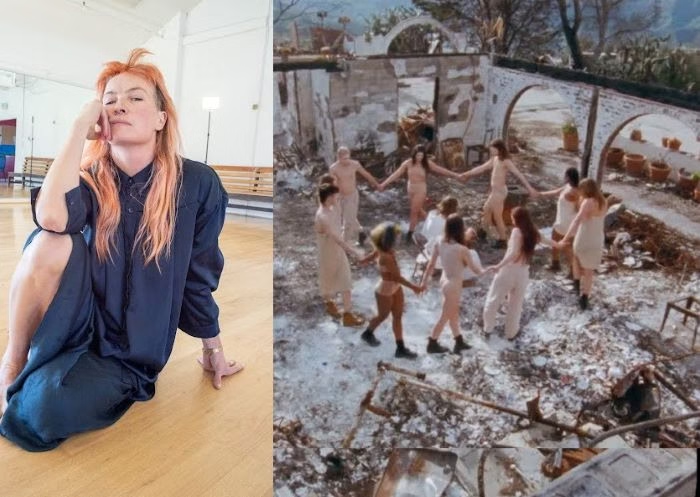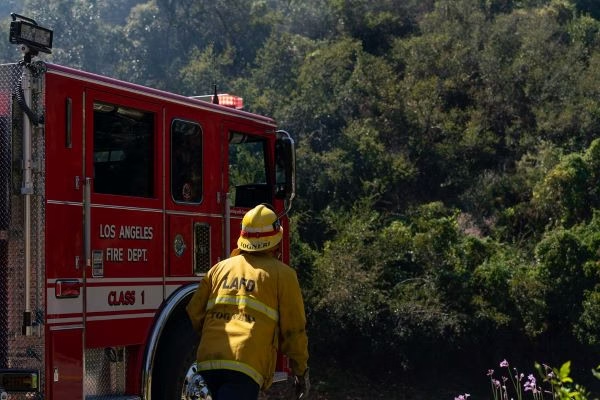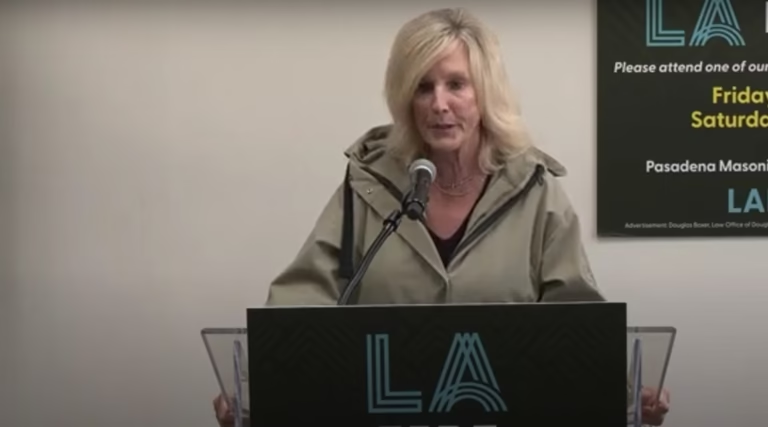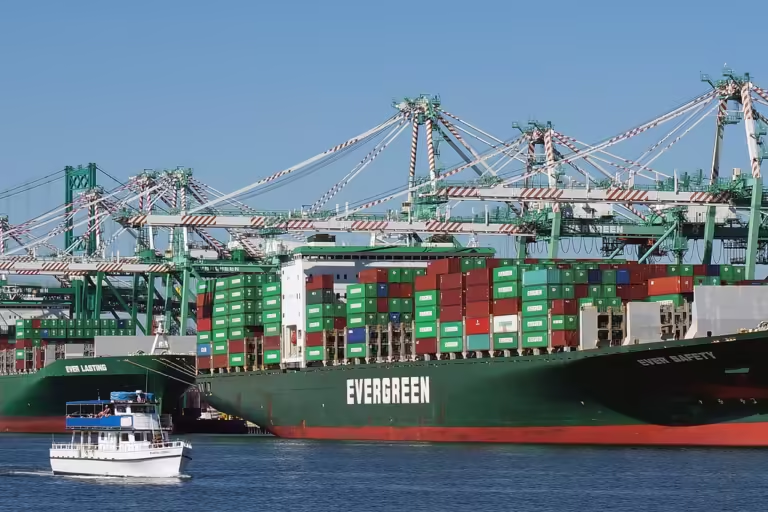By David Bacon
Rosa Luxemburg Stiftung Jan. 21
https://rosalux.nyc/the-evolving-strategy-for-defending-immigrant-workers/
The current fight within the Republican Party makes it very clear, once again, that ensuring a labor supply to corporations is Trump’s primary obligation. I say once again because this is a repeat of what happened in 2017, when he met with corporate growers to assure them that his immigration enforcement wouldn’t deprive them of workers in the field. In fact, that is just what happened, with the expansion of the H-2A guestworker visa program, and no mass firings of farmworkers at critical times because of their undocumented status.
Two months ago construction companies in Texas made media appeals, not for more border enforcement, but asking Trump not to use enforcement to deprive them of workers. Now the tech industry is demanding workers too. The supply of workers for the tech industry “simply does not exist in America in sufficient quantity” according to Tesla owner and billionaire Elon Musk. Tech corporate titans, including Google’s Sundar Pichai, Facebook’s Mark Zuckerberg and Amazon’s Jeff Bezos all visited Trump’s Mar-a-Lago estate during and after the campaign, making the same demand. Just before New Years Trump responded, saying “I have many H-1B visas on my properties. I’ve been a believer in H-1B. I have used it many times. It’s a great program.” In his hotels and golf courses he has also used another Federal guestworker visa program, H-2B, to supply gardeners and housekeepers.
Whether for tech titans or corporate growers, the key issue is supplying workers at a price they want to pay. Agriculture and construction laborers are just two industries built on a workforce at close to minimum wage. The guestworker contract labor programs in these industries are structured to provide that labor at that wage. Tech companies want to use its H-1B visa program to keep its software workforce at substandard wages as well. They all expect Trump to meet their demands, and poured money into his campaign to make sure that happened.
For defenders of immigrant workers, this is a threatening moment. Some immigrant workers, like the million-plus undocumented laborers in agriculture, will certainly feel the brunt of Trump’s threatened immigration enforcement. The corporate need for labor will not, in the end, protect them. If employers can get replacement workers at low wages, they have no loyalty to the workers they now have. But it does give some leverage to undocumented workers to protest against raids, firings and other forms of enforcement, where employers remain dependent on them. That can be a crucial protection. In addition, if unions and workers living here help the contract workers on H-2A, H-2B and H-1B visas to protest the abuse in these programs, that can be additional protection for all workers.
The benefit of organized resistance goes beyond fighting raids and keeping jobs. Organizations and coalitions that defend immigrant workers, their families, and their communities have historically been the pillars of movements for deeper social change. They’ve shown great persistence and strategic vision, as they fought back against threats of deportation. More than that, they have imagined a future of greater equality, working-class rights, and social solidarity, and have proposed ways to get there. That vision, the capacity and willingness to fight for basic change, is as necessary to defeating repression as action in the streets.
Replacing migrant workers
Immigration enforcement does not exist on its own. It has a function in a larger system that serves capitalist economic interests by providing the labor force that employers need. Immigrant labor is more vital than ever to many industries. More than 50% of the entire agricultural workforce in the country is undocumented, and the list of other industries that rely on immigrant labor is long: meatpacking, some construction jobs, building cleaning, health care, restaurants and retail, hotels, and more.
Trump is not free to eliminate this workforce. This is potentially a source of power for workers. Employers know this, and within months of his inauguration in 2017, agribusiness executives were already meeting with him to ensure that threats of a closed border and raids would not be used when they needed labor. Last month, Texas construction companies warned Trump that mass deportations would threaten their profits. In 2006, some California farmers bused workers to big marches in the hope that the Sensenbrenner Act would not deprive them of workers.
But workers, communities, and unions can’t rely on employers to fight Trump for them. What businesses need is labor at a price they’re willing to pay. The current system has served them well. The Bureau of Labor Statistics estimates that about 8 million of the 11-12 million undocumented people in the United States are wage workers, and most work for or near the minimum wage. The abysmal federal minimum wage of $7.25 an hour produces an annual income of $14,500. And higher minimums in states like California only produce an income of barely twice that amount. The median household income for farmworkers is less than $25,000. Yet Social Security estimates the median wage in the United States at $66,000.
That huge gap is a source of enormous profits. If industries that rely on immigrant labor paid the average wage, they would have to pay undocumented workers an additional $250 billion. The profits they make from low-paid labor are enormous. Trump needs to ensure not only that workers contribute labor, but that the cost is acceptable to corporate employers.
In his 2017 meetings with farmers, Trump promised to expand the contract labor system, in which up to a million people hired by employers work in the United States each year. These workers can only come to work, not stay. Visa categories include the notorious H-2A program for agricultural labor, like the old bracero program of the 1950s. Last year, farmers received 378,513 H-2A visa certifications, one-sixth of the entire U.S. agricultural workforce. The program is notorious for abusing workers, and recent reforms by Labor Secretary Julie Su are not going to survive. The H-2A program is huge, but others like it are growing in hospitality, the meat industry and other industries, even for teachers in schools.
Independent Senator Bernie Sanders, a democratic socialist, criticizes the H-1B visa program, whose primary user is the tech industry. There its function, he says, “is not to hire ‘the best and the brightest,’ but rather to replace good-paying jobs with low-wage indentured servants from abroad. The cheaper the labor they hire, the more money the billionaires make.” While the number of new applications for those workers is capped at 66,000 per year, the limit is usually extended. The visa lasts for 3 years, and can be renewed. As a result, according to the US Customs and Immigration Service, in 2019 the number of H-1B workers in the country was 619,327. Sanders noted that “the top 30 corporations using this program laid off at least 85,000 American workers while they hired over 34,000 new H-1B guest workers.”
There is no way to recruit and deploy so many workers without displacing the existing workforce, which, in agriculture and meatpacking, is largely made up of immigrants who already live here. For unions and worker advocates, this poses a dilemma, and the expansion of H-2A or H-1B will deepen it. How can they organize and defend existing workers, including their members, while also defending those who replace them? Yet H-2A farmworkers, for instance, themselves are not simply passive victims. They have a history of protesting exploitation. To strike means being fired, losing one’s visa and having to leave, and then being blacklisted from future recruitment. Yet despite the risks, these workers sometimes act when conditions become dire.
Unions like Familias Unidas por la Justicia in Washington state have helped contract workers when strikes break out. But growers keep workers isolated, making it difficult to organize. Meanwhile, FUJ and other unions protest displacement, because job loss in farmworker communities means hunger and evictions. In many farmworker localities, existing workers increasingly fear being replaced. Strikes to raise wages are risky and less frequent. At the Ostrom mushroom plant in Washington state, local workers, members of the United Farm Workers, have been on strike for two years against replacement by H-2A visa recruits.
By the early 1960s, the increasing willingness of braceros to leave their camps and join local workers’ strikes caused the program to lose popularity among growers. This contributed to its abolition. Trump’s program to fill labor needs would pose the same challenges, but also opportunities for organizing.
Resistance in working-class communities
For decades, immigration enforcement has combined workplace enforcement with community-based raids and sweeps. Chicago’s working-class neighborhoods have a long history of large marches to protest immigration raids. As Obama entered his second term in 2013, activists, including Occupy Chicago, blocked buses headed to immigration courts. Emma Lozano of the Center Without Borders and other labor activists were arrested. Similar direct action tactics were used in Tucson, Arizona, by young people who chained themselves to buses transporting detainees to the special immigration court.
Trump’s 2016 campaign promised to turn Chicago into a hotbed of enforcement. As the anti-immigrant hysteria promoted by his campaign spread, ICE began stopping people on the street, knocking on apartment doors and pulling people out for detention. The enforcement spree, which continued through 2019, included raids on street corners and sidewalks near Home Depot and other gathering spots for day laborers. The public presence of day laborers has historically made them a particular target of immigration street raids.
Activists responded to Trump’s threat with action. In 2019, thousands of people marched through the Loop chanting “Immigrants are welcome here!” and in Federal Plaza after learning that ICE agents were about to be deployed.
Unions helped organize the resistance. Don Villar, a Filipino immigrant who headed the Chicago Federation of Labor, told protesters, “Throughout the labor movement’s history, immigrants have enriched the fabric of our city, our neighborhoods, our workforce, and our labor movement. Many of the fundamental rights that immigrants struggle to attain are the same rights the labor movement fights to secure for all workers every day.”
Chicago also saw one of the most effective direct actions in the campaign against deportations. As President Obama prepared his re-election campaign in 2012, young undocumented immigrants, brought to the United States as children, occupied his campaign office. The occupation capped two years of organizing marches, fiercely fighting the detention of activists. They pushed for the passage of a law that would grant them amnesty from deportation. After his re-election, Obama issued an executive order, Deferred Action for Childhood Arrivals, that postponed their deportation.
DACA has withstood a legal onslaught for a decade, but right-wing courts and the MAGA administration will no doubt try again to kill it. For hundreds of thousands of people who had to provide personal information when applying, immigration authorities will be able to use it to find and detain them.
The same problem faces beneficiaries of Temporary Protected Status, which allows people fleeing environmental or political dangers to stay and work in the United States. If Trump tries to withdraw the protection, legally or not, the information to detain people is already in the hands of the government.
The most effective resistance to immigration in recent history hinged on the massive immigrant marches of 2006. Sparked by the House passage of HR 4425, the Sensenbrenner Act, people took to the streets by the millions on May Day. The law would have made it a federal crime to be in the United States without immigration papers, a danger so extreme that it threatened every family. The demonstration relied on Spanish-language radio to spread the word, and on networks of immigrant rights activists and organizations that brought together people from the same places of origin.
Labor unions were prominent among the mobilizers, organizing one of two marches held on the same day in Los Angeles, each drawing more than a million participants. Unions and immigrant networks organized marches of hundreds of thousands in cities across the country. The message was further strengthened by a grassroots movement, “A Day Without Mexicans,” which urged immigrant workers to stay home to demonstrate how essential their labor is. When some participants were fired on their return, some unions became involved in defending their right to protest.
The movement achieved its short-term goal: HR 4425 died. But the cultural impact was just as important. May Day had been attacked as the “communist holiday” in the Cold War, and celebrations became tiny or disappeared altogether. After 2006, the United States joined the rest of the world in celebrating it, and marches are now held widely every year. While not as large as in 2006, annual May Day marches bring out progressive community and labor activists in large numbers – and could provide a readymade vehicle for challenging a renewed Trump deportation threat.
A similar bill, California’s Proposition 187, which would have denied schools and medical care to undocumented children and families, also had unintended consequences. Proposition 187 convinced many Los Angeles immigrants and their citizen children to become voters, and the leftward movement of the city and state’s politics owes a lot to that decision. As a result, labor now has a powerful political bloc in LA – in a city that was the “Citadel of the Open Shop” just a few decades ago.
Both May Day and the Day Without Immigrants became a vehicle to protest Trump’s first inauguration. In San Francisco, members of several chapters of the Democratic Socialists of America marked the first May Day after Trump’s election with a direct action blocking ICE’s garage doors with a human chain, brandishing signs reading “Sanctuary for All” and “We Protect Our Community.” In the mobilizations surrounding them, labor support for immigrant workers facing raids grew. Four unions declared, “We will march and stand in solidarity with our immigrant worker brothers and sisters against the Trump administration’s terrorist tactics.”
Defending Against Workplace Raids
The decades following the Cold War saw workers and unions developing increasingly sophisticated strategies to resist immigration enforcement. From factory floors to union halls, these battles helped shape today’s immigrant rights movement.
One of the first battles against workplace raids took place at the Kraco car radio factory in Los Angeles in the early 1980s. Workers who joined the United Electrical Workers union stopped production lines to force the owner to deny entry to immigration agents and saved each other from deportation. Later, the Molders Union Local 164 in Oakland joined the Mexican American Legal Defense and Educational Fund in suing the Immigration and Naturalization Service over its practice of having agents lock factory gates, hold workers prisoner, and then interrogate and detain undocumented workers. The case went to the U.S. Supreme Court, which declared the practice unconstitutional. They still cannot enter without a warrant and names of people.
In one of the Bush administration’s final raids in 2008, immigration agents took 481 workers from Howard Industries, a Mississippi electrical equipment manufacturer, to a private detention center in Jena, Louisiana. They were not charged, had no access to lawyers and could not be released on bail. Jim Evans, national organizer for the AFL-CIO in Mississippi and a leading member of the state legislature’s Black Caucus, said, “This raid is an effort to drive immigrants out of Mississippi and a blow to immigrants, African Americans, whites and unions – all those who want political change here.”
Evans, other members of the black caucus, many of the state’s unions, and immigrant communities all saw shifting demographics as the basis for changing the state’s politics. They organized the Mississippi Immigrants Rights Alliance (MIRA) as a vehicle for protecting the immigrant part of that constituency.
By the 2000s, these workplace battles had evolved into complex struggles over race, labor rights, and political power in the South. Howard Industries, one of the state’s few unionized factories, paid $2 an hour less than the industry norm. “The people who benefit from Mississippi’s low-wage system want it to stay the way it is,” Evans said, charging that the immigration raid was used to undermine the union.
MIRA activists responded to the raid with organizing and sitting on the grass with the families of those arrested. “When the shift changed, African American workers started coming out and they approached these Latina women and started hugging them,” MIRA organizer Victoria Cintra recalled. “They were saying things like, ‘We’re with you. We’re glad you’re here. ‘” MIRA’s key strategy is to forge unity between immigrant and African American workers.
In 2011, Chipotle fired hundreds of its workers throughout Minnesota. Their crime was that they were working but had no immigration papers. Thousands of laid-off workers were targeted by the Obama administration’s key immigration enforcement program: identifying undocumented workers and then forcing companies to fire them. Without work or money for rent and food, they would presumably “self-deport.” In Minneapolis, Seattle and San Francisco, more than 1,800 janitors lost their jobs. In 2009, more than 2,000 young women working on American Apparel sewing machines were fired in Los Angeles. Obama’s ICE director, John Morton, said ICE had audited more than 2,900 companies in just one year, and the number of layoffs ran into the tens of thousands.
In Minneapolis, the Service Employees Union Local 26 helped Chipotle workers organize marches and demonstrations, in cooperation with the United Workers Center in Struggle, a local worker center, and the Minnesota Immigrant Rights Action Committee. They were arrested for civil disobedience at a Chipotle restaurant and organized a boycott of the chain. With this pressure, the layoffs at Chipotle stopped.
It is now almost certain that this enforcement tactic will be key for the new administration as well. When Trump was inaugurated in 2017, many unions expected workplace raids and firings to be a major part of his enforcement program as well. The hotel union in Oakland, California, developed a proactive strategy to keep ICE out of workplaces and called on the Oakland City Council to protect immigrants on the job. The city council passed a resolution noting that it has been a “city of refuge” since the anti-apartheid movement of the mid-1980s.
Trump is threatening again, as he did in 2016, to end federal funding to more than 300 sanctuary cities. In addition, many cities, and even some states, have withdrawn from the 287(g) program, which requires police to arrest and detain people based on their immigration status. Trump promises to reinstate it and cancel federal funding to cities that do not cooperate.
Seeking alternatives, like many unions, HERE Local 2850 (now part of Unitehere Local 2) began negotiating protections in union contracts. They require managers to notify them if immigration agents try to enter, question workers, or demand documents. The contract says the hotel has to keep agents out unless they have a court order. The union then helped workers hold out at a hotel where new owners demanded they show their immigration papers to keep their jobs. All of the hotel workers refused, documented and undocumented alike, and the company backed down.
California’s janitorial union, SEIU United Service Workers West, wrote the Immigrant Worker Protection Act, a state law that requires employers to seek a court order before granting ICE agents access to a workplace. It prohibits employers from sharing sensitive information, such as Social Security numbers, without a warrant. The law came after years of fighting workplace raids and immigration-related firings. In 2011, Los Angeles janitors sat down at city intersections to protest layoffs at Able Building Maintenance, and fought similar layoffs at Stanford University cafeterias and among janitors at Apple and Hewlett-Packard’s Silicon Valley buildings.
When Trump took office in 2017, the International Longshore and Warehouse Union (ILWU), Filipino Advocates for Justice and several other groups held trainings to prepare workers for raids. Union members role-played situations in which labor strikes were used to protect each other. Some were veterans of an earlier organizing drive among recycling workers, in which they stopped work to prevent the company from firing employees for not having papers.
At the beginning of the Bush administration workers in wealthy Palm Springs, California, fought a crucial battle. They were working at the luxury Palm Canyon resort for $4.75 an hour, and they began organizing with Hotel and Restaurant Employees Local 309 (HERE). The hotel hired security guards, dressed in uniforms imitating those of the Border Patrol, and began firing workers. Immigrant housekeepers organized a silent march in the street, prayed in the parking lot, and then refused to go back to work.
With the support of Local 309, they remained on strike for four months. Palm Canyon was eventually forced to agree to reinstate the workers with back pay. But when the hotel said only workers with legal immigration status could return, they all remained on strike for another month, documented and undocumented together, until they all returned.
What makes the Palm Canyon experience important today is not just the workers’ inspiring courage, but the strategic ideas that guided them. They organized around the concrete conditions of their lives. Faced with legal repression and layoffs, they defied efforts to make them suffer. Knowing they could not fight alone, they sought help. The union stood by them. And most important, they stuck together.
That same year, the AFL-CIO held its convention in Los Angeles, focused on organizing immigrant workers. Rejecting its history of supporting anti-immigrant legislation, the union federation adopted a resolution calling for immigration amnesty for undocumented immigrants and the repeal of the 1986 law that prevents them from working. Palm Canyon strikers were among the many witnesses at the subsequent union hearings organized around the country to expose the violation of immigrant workers’ rights. Hearings and public exposure is an important a tactic for resistance in a new Trump administration as it was then.
Beyond the Threat of Deportation
In the civil rights era, the fight against Cold War mass deportations and the bracero program was two-pronged. Leaders of the Chicano civil rights movement in particular-Bert Corona, Cesar Chavez, Larry Itliong, Dolores Huerta-fought to end the program, a demand they won in 1964. But the movement did more than fight abuses. It proposed and fought for more fundamental change.
In part, this played out on the ground. In 1965, Larry Itliong and veteran Filipino farm unionists initiated the Great Grape Strike, a year after the program ended. That same year, the civil rights movement among Chicanos, Mexicans, and Asian Americans achieved a fundamental change in U.S. immigration law. The family preference system, which favored family reunification over the labor needs of employers, became the basis of U.S. immigration policy, at least for a time.
In the flow of people crossing the border, “we see our families and coworkers, while the farmers only see money,” says farm and domestic worker organizer Rene Saucedo. “So we have to fight for what we really need, and not just what we don’t want.” In other words, the fight to stop deportations requires fighting for an alternative. There have been many such alternative proposals over the past two decades, from the Dignity Campaign to the American Friends Service Committee’s New Path. Today, the movement for an alternative is centered on the Registry Bill, a proposal that would give legal status to an estimated 8 million undocumented people. The bill would update the cutoff date that determines which undocumented immigrants are eligible to apply for legal permanent residence. Right now, only people who arrived before January 1, 1973 can apply for it – a tiny and vanishing number. The proposal would bring the date to the present.
Another, longer-range demand is the extension of voting rights. It is no accident that many of the counties and states where the undocumented workforce is concentrated, and where it produces the most profit for employers, are MAGA strongholds. If the whole working population of Phoenix and Tucson could actually vote, it would likely elect representatives who would pass social protections for all workers. Extending the franchise could add enough people to the political coalition in Mississippi to enable it to finally expel the Dixie establishment. So instead of thinking of the vote as a restricted privilege, as we are taught, we need to think of it as a working-class weapon – and understand how powerful class unity could make us across the lines of immigration status.
Likewise, the political education of the American working class has to include an understanding of the roots of migration. U.S. actions abroad, from military intervention to economic sanctions to neoliberal reforms, make migration a matter of survival. When Mexicans fight for the right to stay home rather than come north, and elect a government that promises to move in that direction, they deserve and need the support of the working class on the northern side of the border. Cross-border solidarity has a long history, but the media denies us knowledge of it. Without an independent effort to educate workers, the door is opened to MAGA and closed to our ability to organize in our own interest.
Faced with 281 million people living outside their countries of origin, the United Nations has adopted the Convention on the Rights of All Migrant Workers and Members of Their Families. This Convention supports the right to family reunification, establishes the principle of “equal treatment” with citizens of the host country in relation to employment and education, protects migrants against collective deportation and makes both countries of origin and destination responsible for protecting these rights. However, so far only forty-nine migrant-sending countries, like Mexico and the Philippines, have ratified it.
No US administration, Democrat or Republican, has ever submitted it to Congress for ratification.
The Importance of History
The history of working-class organizing in the United States is full of examples of immigrant resistance to mass deportation, sweeps, and other tactics. Time and again, immigrant worker activity has changed the course of society. It has produced unions of workers ranging from copper miners to janitors. It turned the politics of Los Angeles head. And it is this tradition of worker resistance that is the real target of immigration enforcement waves, both current and threatened by the incoming administration.
Organizers of the past fought deportation threats just as we do today, and their experiences offer valuable insights for our present situation. Not only did they show tremendous perseverance in the face of direct threats, but these organizers also envisioned a future of greater equality, working-class rights, and social solidarity – and proposed ways to get there. Increased immigration repression has a way of making the bones of the system easier to see and the reasons for changing it abundantly clear. These organizations and coalitions defending immigrant workers, their families, and their communities have often been building blocks for movements for deeper social change.
The rich tradition of worker organizing against immigrant repression is a story of courageous struggle and a reservoir of strategic thinking that can help immigrant workers and communities confront the promised MAGA wave of repression.
In the outpouring of fear and outrage over Donald Trump’s threat to deport millions of undocumented immigrants, many have drawn parallels to the mass deportations of 1932-33. At the height of the Great Depression hunger haunted the homes of millions of working-class people. Relief authorities denied food to Mexican and Mexican American families, and appealed to the government to deport them, claiming that forcing them to leave would save money and open up jobs for citizens. These age-old lies have been recycled repeatedly over the last century, most recently by the MAGA campaign.
Hunger was indeed a powerful weapon to force people to leave. Thousands were swept up in street raids, and many more fled because of the terror these raids produced. Voluntarily or not, people were loaded into boxcars and dumped at the border gates. The euphemism of the 1930s was “repatriation.” Today’s immigration enforcers call it “self-deportation.” The idea remains the same, and Trump and J. D. Vance are only the latest proponents of this inhumane policy.
People resisted deportation through the radical organizations of the era, from the Congreso de Pueblos de Habla Española to the unions formed in bloody strikes in mines and fields. The largest farm labor strike in US history, the Pixley cotton strike, erupted in 1933 across the barrios of California’s San Joaquin Valley during that peak deportation year. Radical activists were singled out for deportation and defended by communist and socialist defense organizations, including later the Committee for the Protection of the Foreign Born. The Mexican government of the time, only a decade after the revolution, also protested and tried to help deportees.
This history of resistance is as important to remember as the history of the deportations themselves. The organizations created by resistance, and the larger working-class movement of which they were a part, survived the deportation wave. While many groups were put on the attorney general’s list of subversive organizations during the Cold War, others emerged during the civil rights era. When the immigrant rights movement peaked again in recent decades, it inherited this legacy.
It is a history of courageous struggle and a reservoir of strategic thinking that can help immigrant workers and communities confront the repression promised by today’s MAGA.













